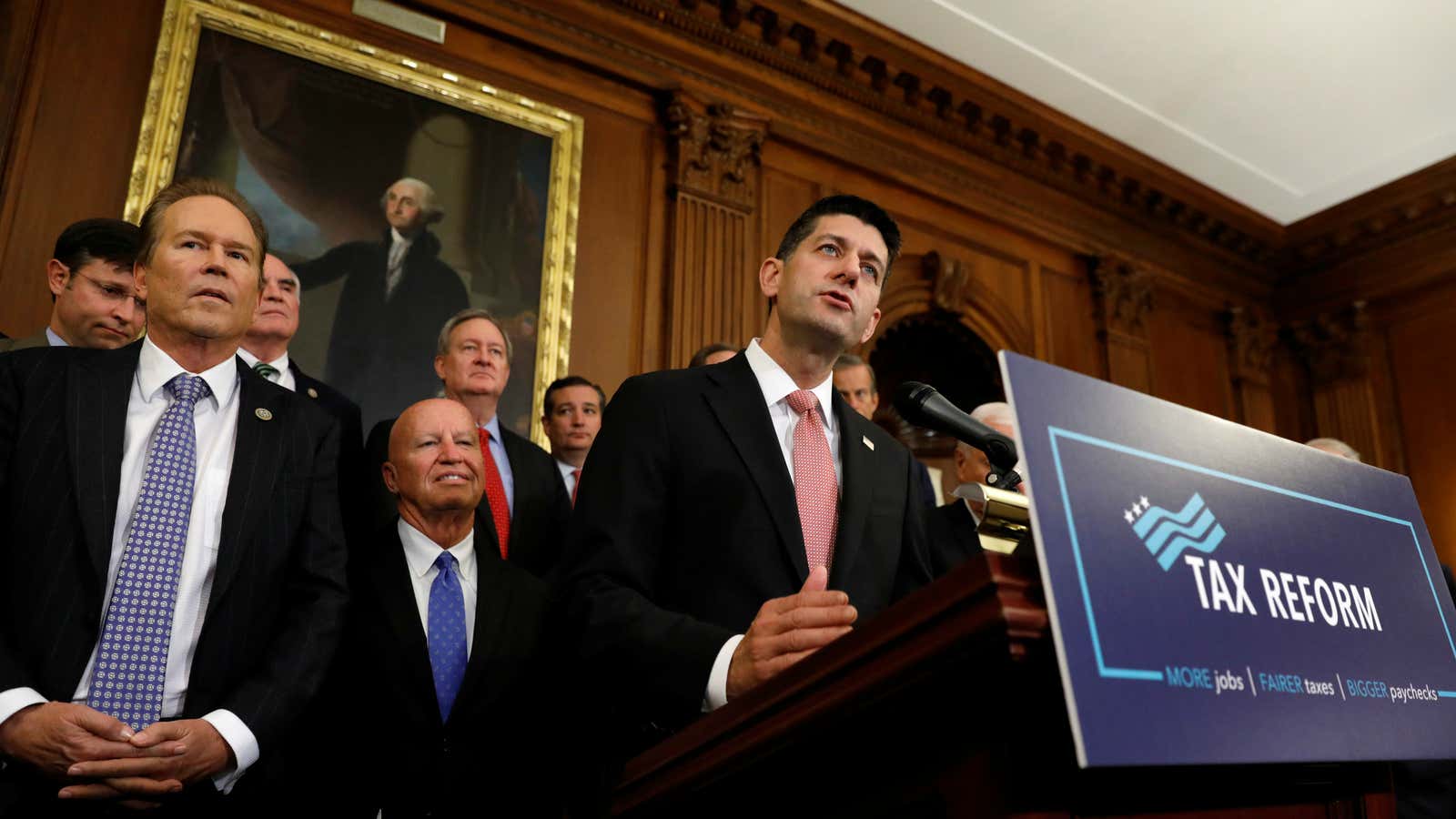The push for “tax reform” in the US often seems convoluted and confusing. It doesn’t have to be.
While some of the details are complex, at its essence, the Republican plan to overhaul the US federal tax system can be understood in two charts. These charts use data from preliminary projections by the independent Tax Policy Center on the most recent Republican proposal.
The first is an estimate of the average effect of the tax cuts on after-tax income in 2018, by household income level:
This analysis suggests the wealthiest Americans would see their incomes rise most in both relative and absolute terms. The average household in the top 1% would see a 8.5% increase in their income, compared with a 1% increase for middle-income households.
Not every family will benefit equally. For example, households with children would receive a larger break than those without. Also, over the long-term, the Tax Policy Center projects households in the 80th to 95th percentage of income are projected to see a tax increase, though the top 5% of earners would continue to gain the most.
The reason the wealthy gain so much more than others is that the biggest tax reductions are for corporations, small businesses, and the deceased (via the estate tax). As the second chart shows, the overwhelming impact of the reform plan is to reduce taxes on businesses. Business tax cuts typically offer the greatest benefit to owners of stock and wealthy small business owners.
The Tax Policy Center finds that the cuts would reduce government revenue by $2.4 trillion over the next 10 years (For context, the federal budget for 2017 is $3.7 trillion). That means that, for the tax plan not to worsen the country’s fiscal situation, the government will either have to cut spending—on welfare, health care, defense, or other programs—or taxes will have to be raised in the future to repay the money borrowed to pay for this tax cut.
It is also possible that, as the White House’s chief economist Kevin Hassett says, lower tax rates will lead to increased economic growth. This would generate more tax revenue despite lower rates, which would make up for some of that lost $2.4 trillion.
The Tax Policy Center does not project that any long-term additional growth, suggesting that the changes would just lead to debt spending. By contrast, the Tax Foundation, another think tank, projects that lower tax rates would boost the size of the economy by 7-8%. Even with such a significant increase, the reform plan would still result in a rise in the US budget deficit.
